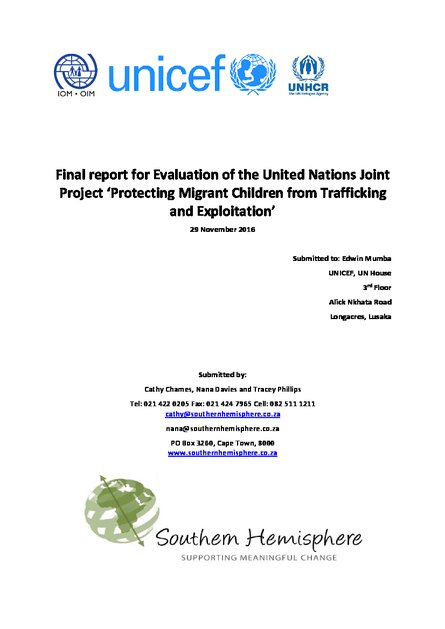
Zambia is a source, destination and point of transit for people trafficking and currently hosts roughly 52,200 refugees, asylum seekers, economic migrants, and unaccompanied and separated minors (UASC).1 Most of the refugees come from the neighbouring countries, with some coming from the Horn of Africa.2 UASC are among the most vulnerable constituents of mixed-migration movements to Zambia for a number of reasons, including lack of a legal framework that provides them with comprehensive protection; a failure to coordinate on migration issues across countries; a lack of formal structures to identify and record UASC; an absence of screening facilities/shelters for children and widespread negative attitudes among Zambians toward migrants. In response to these challenges, the International Organization for Migration (IOM), United Nations High Commissioner for Refugees (UNHCR) and the United Nations Children’s Fund (UNICEF) implemented a three-year Joint Project called “Protecting Migrant Children from Trafficking and Exploitation”. The overall objective of the United Nations Joint Project (UNJP) was to mitigate the vulnerability and increase the protection for children at a high risk of trafficking and exploitation due to migration. The two specific objectives were: 1) Upgrading of Zambian laws pertaining to vulnerable children and persons of concern, and establishment of mechanisms for their enforcement; and 2) Contribute to institutional development and capacity building of service providers and the judiciary to identify, prevent, protect and respond to cases of unaccompanied minors, child victims of trafficking and asylum-seekers which result from migration.
